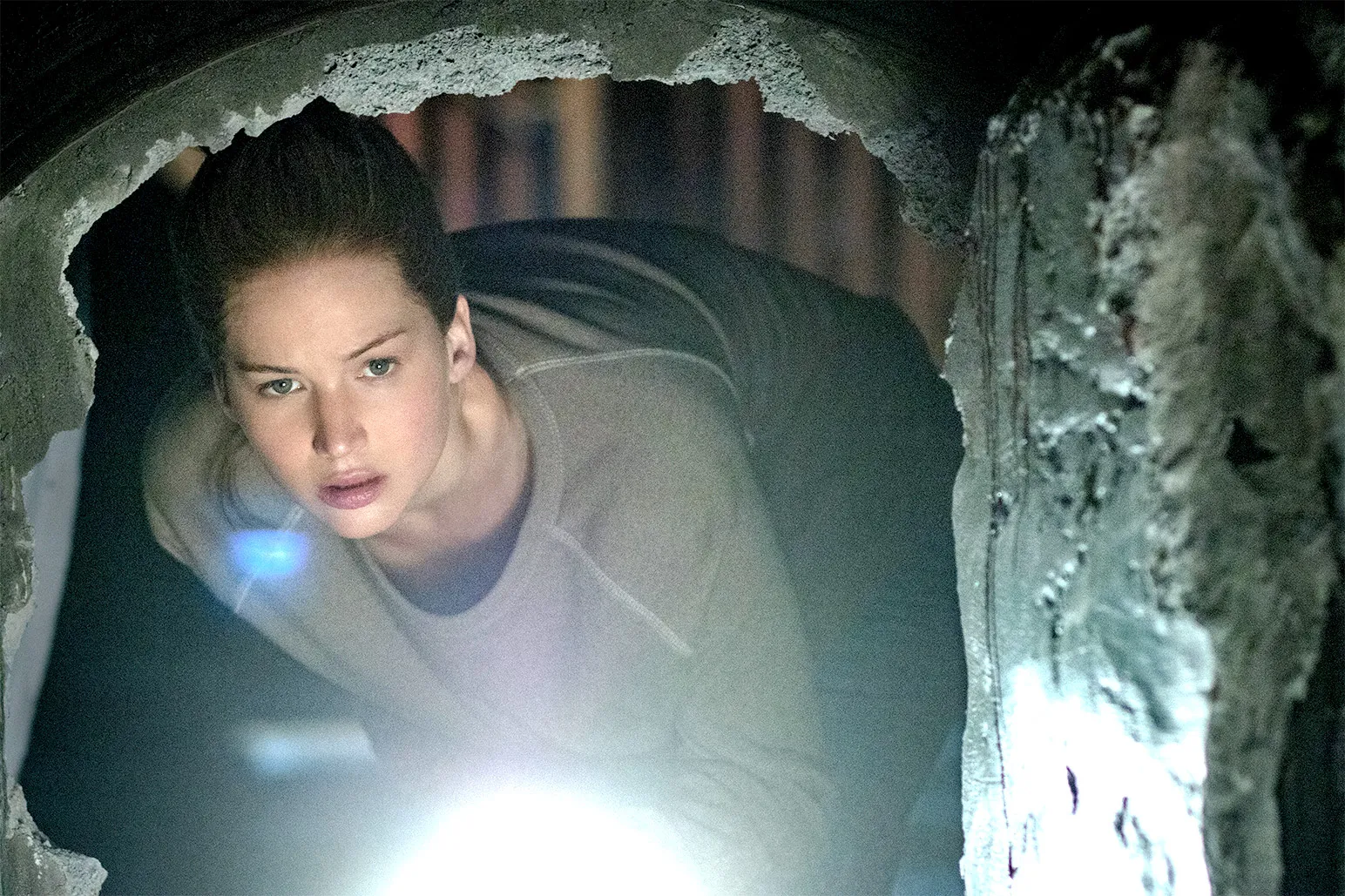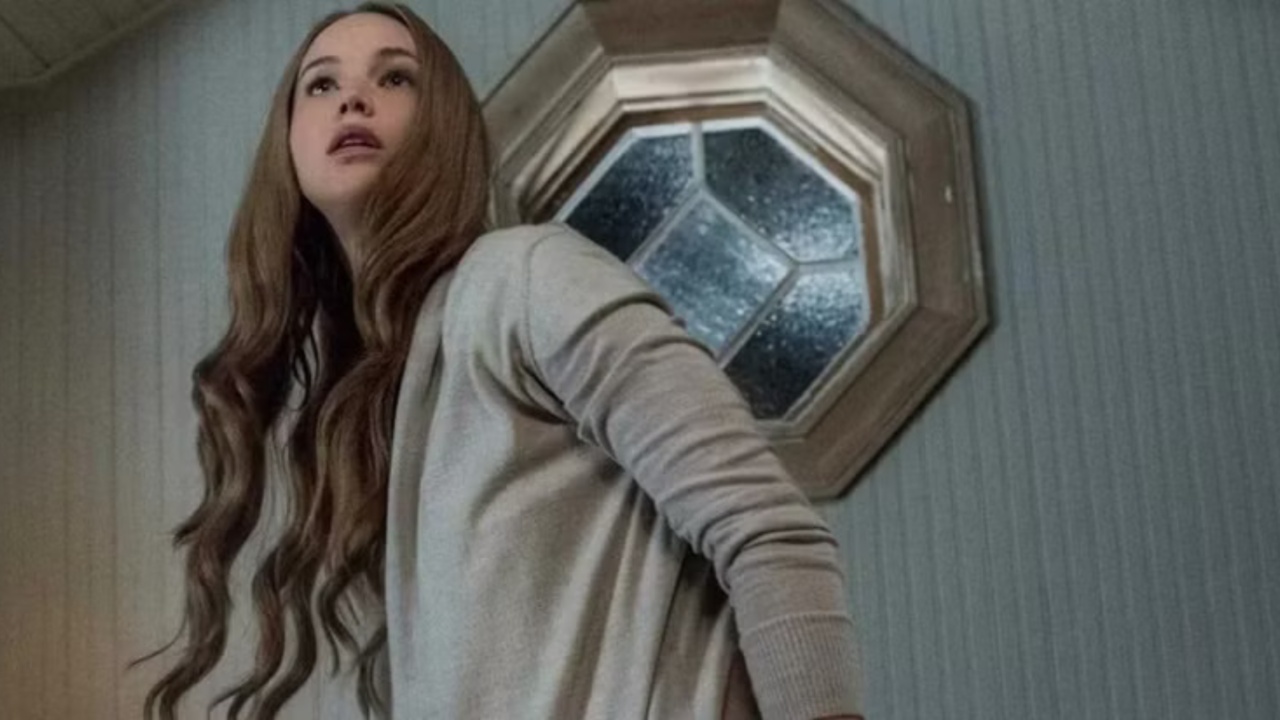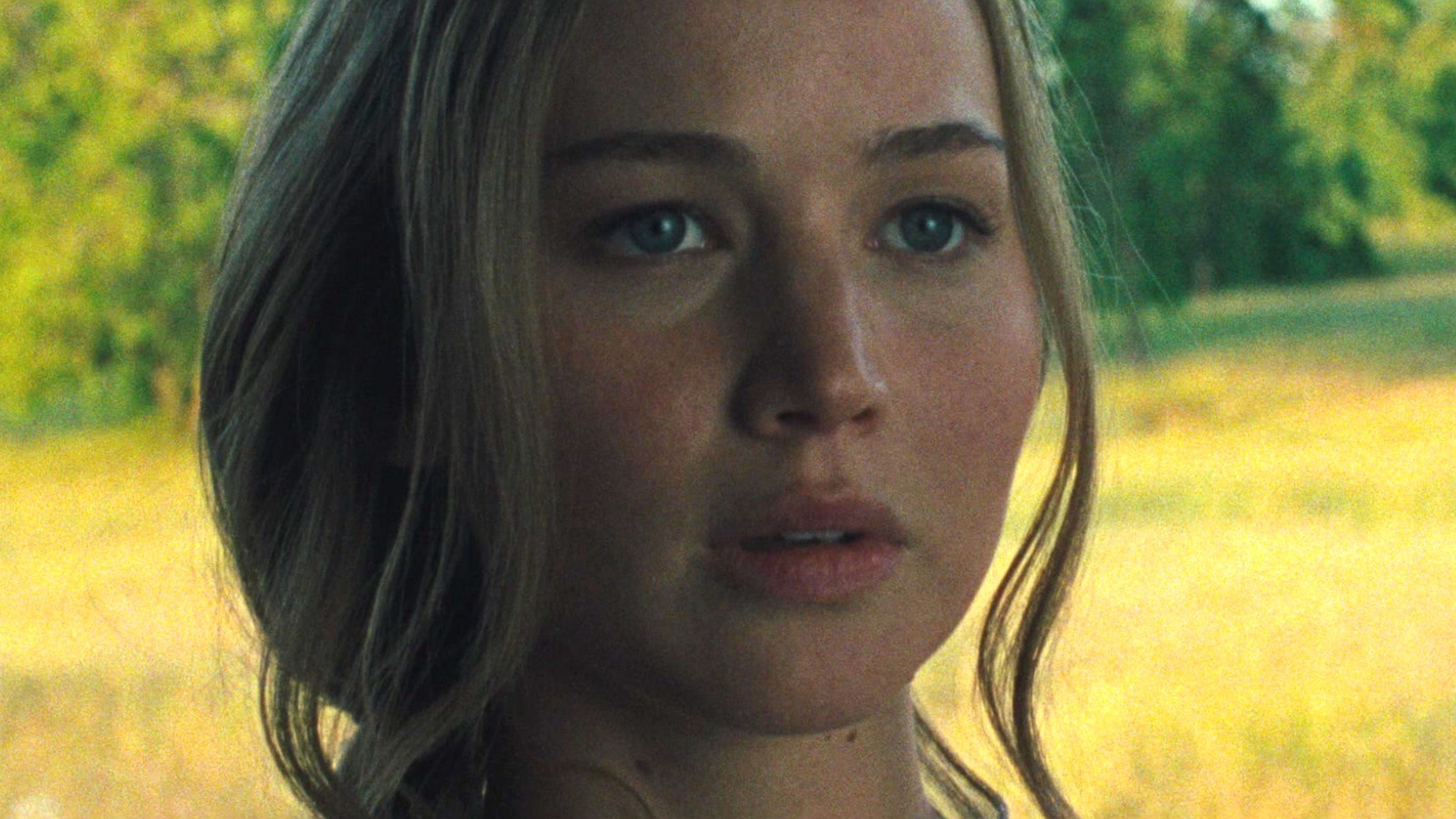Darren Aronofsky’s mother! (2017) is a psychological horror film that challenges traditional storytelling through allegory, surreal visuals, and intense emotional tension. The story revolves around Jennifer Lawrence as Mother and Javier Bardem as Him, a poet, whose tranquil life is disrupted when uninvited guests begin arriving at their secluded home.
What starts as minor disturbances escalates into chaos, violence, and a psychological unraveling, creating a narrative that functions as both a horror story and a deeply symbolic meditation on creation, destruction, and devotion. The film was polarizing from the start, with audiences divided over its unconventional approach, particularly its intense and allegorical ending.
Early in the film, two strangers, Man (Ed Harris) and Woman (Michelle Pfeiffer), arrive at the couple’s home, appearing harmless but soon exposing deeper conflicts. They are admirers of Him’s poetry, with Man on the brink of death seeking to witness the writer’s talent. Their arrival sets off a chain of events that disrupt Mother’s peace and contributes to the deterioration of her home. The couple’s presence triggers Him’s creative inspiration, while Mother bears the emotional and physical burden of accommodating strangers, foreshadowing the film’s symbolic exploration of exploitation and intrusion.
Him’s poem, which serves as a central MacGuffin in the film, is intentionally left unread by the audience. Its importance lies not in its content but in its representation of creative work and the fervent devotion it inspires. The poem transforms the visitors’ reverence for Him into an obsessive force, driving them to invade the house further and ultimately contributing to its destruction. Mother’s apprehension proves prescient: the admiration of Him’s followers escalates from mere fandom into destructive mania. This narrative device highlights the pressures of creative ownership and the dangerous consequences of misplaced devotion.

Violence, Environmental Decay, and Eternal Cycles Reflect Mother’s Trauma and Symbolic Struggle
One of the film’s most distressing moments occurs when the crowd kills Mother and Him’s newborn child. This scene, emotionally intense and visually unsettling, functions as a metaphor for the extreme consequences of blind adoration and the perceived ownership of art and life by others. The crowd’s violence reflects humanity’s destructive tendencies, both to creative work and to nature, emphasizing the cyclical pattern of exploitation and harm that underpins the narrative. Mother’s trauma and helplessness during this moment mark the story’s emotional and symbolic climax.
In mother!, the house itself is a living extension of Mother, connecting her to the physical and emotional stakes of the story. The glowing crystal placed at the start symbolizes life and creation, with Mother’s energy tied to the house’s well-being. As the narrative progresses, the house becomes increasingly invaded and damaged, paralleling Mother’s psychological deterioration. The film literalizes the symbiotic relationship between human beings and their environment, particularly Mother Earth, reinforcing the allegorical interpretation of the story as a reflection on environmental exploitation and the consequences of neglect.
The film’s ending introduces a cyclical structure, with Mother’s death and the house’s destruction followed by a rebirth orchestrated by Him. After burning the house and sacrificing herself, Mother’s heart is transformed into a crystal that reinitiates the cycle, creating a new Mother to care for the home. This time loop implies that the destruction and suffering experienced are not isolated but part of an eternal cycle, reflecting humanity’s repeated patterns of exploitation, worship, and environmental harm. The loop emphasizes the inevitability of renewal through sacrifice while also critiquing the perpetuation of destructive behaviors.

Biblical Allegory, Environmental Collapse, and Artistic Obsession Shape Mother’s Perspective on Creation
The narrative is rich with biblical allegory, with Him as a Godlike figure and Mother representing Mother Earth. Man and Woman are symbolic of Adam and Eve, and their sons parallel Cain and Abel. The film reinterprets creation myths from Mother’s perspective, highlighting the human consequences of divine caprice. Blood stains, destruction, and devotion to Him’s work represent sin, sacrifice, and scripture, respectively. By viewing the story from Earth’s perspective rather than God’s, Aronofsky emphasizes the vulnerability and suffering of creation, offering a critique of power, divinity, and the human costs of obsession with worship and perfection.
Beyond biblical allegory, mother! functions as a commentary on contemporary issues, especially humanity’s relationship with the planet. The repeated destruction of the house mirrors ecological devastation, with Mother’s nurturing efforts continually undermined by external forces. Aronofsky frames environmental collapse within the context of human selfishness, ego, and ignorance, suggesting that cycles of destruction will persist unless humanity recognizes and addresses its destructive tendencies. The film’s surreal narrative amplifies this commentary, presenting the consequences of ecological neglect and exploitation in stark, visceral terms.
Aronofsky also examines the nature of art and the artist-audience relationship. Him’s obsession with creation and adoration mirrors the pressures artists face from public expectation. Mother’s suffering symbolizes the personal cost of enabling genius and the imbalance between creation and caretaking. The excessive devotion of Him’s followers parallels society’s consumption of art, suggesting that admiration can become dehumanizing and violent. The narrative critiques both the worship of art and the exploitative patterns surrounding fame, creativity, and control over one’s own work.
The ending of mother! is intentionally ambiguous, surreal, and allegorical, challenging audiences to interpret its layered symbolism. At its core, the film is a meditation on creation, destruction, devotion, environmental neglect, and the cyclical nature of human behavior. Mother embodies Earth, nurturing yet exploited, while Him embodies divine or creative authority, simultaneously revered and destructive. The time loop ending reflects humanity’s repetitive destructive patterns and the persistent consequences of ego, ignorance, and blind worship. Ultimately, Aronofsky’s work serves as a cautionary tale, urging viewers to confront the consequences of their actions toward the planet, art, and each other, and to consider whether the cycle of destruction can ever be broken.



